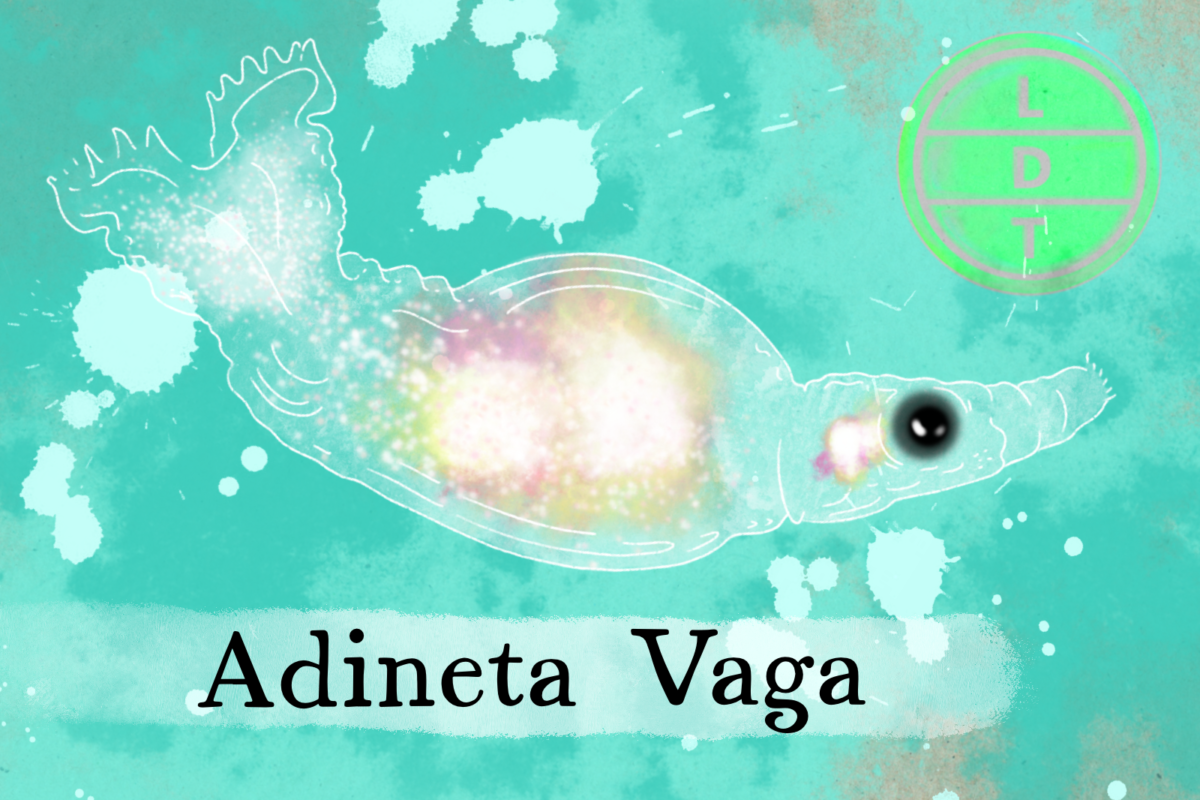“…and today we are talking about a rip van winkle for the ages. But more on that later.”
What if you could talk to someone from thousands of years ago? What could they tell you about the world and what it was like to navigate through it? Researchers in Siberia are asking similar questions. Unfortunately, the one with the answers is a tiny animal called a rotifer, and it doesn’t know how to talk. Sometimes, not even eons on ice can snuff out Life, Death, and Taxonomy.
Description of the Bdelloid Rottifer
- These are animals in the loosest sense of the definition – basically plankton
- They have around 1000 cells – to put that in perspective, we have 28-36 trillion
- You can only see it with a microscope but it looks like a clear pregnant slug or a ghost in its last seconds before Luigi slurps it up in his ghost sucker.
- Most bdelloids are made up of three distinct regions: a head (rounded), a trunk (distended), and a foot (tail), but those in the genus Adineta lack a foot and instead it tapers down to a tail
Measure Up
Welcome to the beloved Measure Up segment. The official listener’s favorite part of the show! The part of the show when we present the animal’s size and dimension in relatable terms through a quiz that’s fun for the whole family. It’s also the part of the show that’s introduced by you when you send in audio of yourself saying, singing, or chittering the words Measure Up into ldtaxonomy at gmail dot com. We don’t have a new Measure Up intro!
Length
- 150 and 700 µm
- How many Rotifers go into the height of a rottweiler?
- Hint: A rottweiler is fully grown around the two year mark. It is considered to be one of the oldest surviving dog breeds with roots that date back to the Romans. They are said to have accompanied the legion as they crossed the alps.
- 985.7 rotifers, Rottweilers are about 69 cm (2.2 feet)
Class Size
- 450 described species
- How many rotifer classes go into the total number of high school graduates in 2020.
- Hint: There were three million high school graduates in the US in 1980. Montana has the highest graduation rates.
- 8,000 rotifer classes. There were 3.6 million students in 2020.
Fast Facts about Bdelloid Rotifers
- Range: lives in freshwater habitats all over the world
- Diet: eats bacteria, algae, and detritus by creating tiny currents of water around its mouth using tiny hairs called cilia. These currents bring food down into a grinding organ (like the monkey) called the mastax.
- Behavior:
- They are free swimming, but they can also slide if they come into contact with a solid surface. Most rotifers would use the inchworm method since they have a foot. Some rotifers can’t move at all.
- There are no males, only females
- They reproduce through parthenogensis, which means that embryos can develop without being fertilized.
- One species A. vega, can actually repair its DNA using a complicated process involving its cells. Here is a sentence that exists about it: “Germline DNA repair occurs in a specific period of oogenesis during which homologous chromosomes take on a meiotic-like juxtaposed configuration.”
Major Fact: Millennial Thaw
Tardigrades are known to be tough tiny titans, they’ve even been revived after being frozen for 30 years.
However, our friend the rotifer beat that record by millennia. In 2021, researchers in the arctic took a core sample that was dated to be 24,000 years old with accelerator mass spectrometry, which means that they electrocuted the ice and shot it past magnets until it gave in and told them its age.
They thawed out rotifers that were frozen in the ice for 24,000 years.
The rotifers go into a state called cryptobiosis, which is as close to a stopped metabolism that you can get without dying.
Defrosted rotifers were able to move around, eat, and even reproduce.
Freezing something helps to avoid decay, but it presents another problem: ice crystals. Ice crystals are sharp, fractal-like crystal structures that form when something freezes. You can see them form if you look up a video of a bubble freezing.
These crystals tend to destroy cells and animal tissue, which is why we can’t thaw out people and dinosaurs that we find in ice. The rotifers, however, avoid the damaging effect of ice crystals.
The research paper speculates that they must have some, “biochemical mechanisms of organ and cell shielding necessary to survive low temperatures.”
It was previously thought that extremely long-term cryptobiosis would be impossible for multi-celled organisms, so your dreams of being Demolition Man were dim.
But new research into rotifers and certain nematodes that can be frozen for 32,000 years, has revealed even complex organisms can be frozen and thawed. Researchers are even using these organisms to learn how we might be able to cryogenically preserve human cells, tissues, and organs.
Ending: So keep those cilia moving, sleep for 24,000 years, and work on the meiotic juxtaposed configuration of your homologous chromosomes like the bdelloid rotifer here in LDT.

